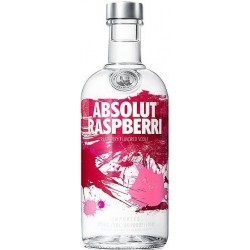Catalog
Elevate any occasion with our exquisite beverage gifts, meticulously curated to enchant the senses. From exquisite wines and artisanal spirits to gourmet coffee and tea sets, our collection caters to every palate and preference. Whether commemorating a joyous celebration, marking a significant milestone, or expressing heartfelt gratitude, our be...
Elevate any occasion with our exquisite beverage gifts, meticulously curated to enchant the senses. From exquisite wines and artisanal spirits to gourmet coffee and tea sets, our collection caters to every palate and preference. Whether commemorating a joyous celebration, marking a significant milestone, or expressing heartfelt gratitude, our beverage gifts are guaranteed to captivate and create cherished memories. Indulge your loved ones (or yourself) with the gift of rejuvenation and pleasure today.
Beverages There are 37 products.
Subcategories
-
Beer
Explore our selection of beer gift sets curated to delight beer enthusiasts. From craft brew samplers to themed collections
-
Spirits
Spirits alcohol, also known as distilled spirits or hard liquor, is a broad category of alcoholic beverages that are produced through distillation. Unlike beer or wine, which are fermented, spirits undergo a process of distillation to increase their alcohol content. Here are some key points about spirits alcohol: Types: There are various types of spirits, including whiskey, vodka, rum, gin, tequila, brandy, and liqueurs. Each type has its own distinct flavor profile, production method, and cultural significance. Alcohol Content: Spirits typically have a higher alcohol content than beer or wine, ranging from around 40% to 60% alcohol by volume (ABV). This high alcohol content is achieved through the distillation process, which concentrates the alcohol from the fermented liquid. Distillation: The process of distillation involves heating a fermented liquid (such as grain mash for whiskey or agave juice for tequila) to create vapor, which is then condensed back into liquid form. This separates the alcohol from the water and other impurities, resulting in a higher alcohol concentration. Aging: Many spirits, such as whiskey, rum, and brandy, are aged in wooden barrels to develop their flavors and characteristics. The aging process allows the spirit to interact with the wood, imparting unique flavors and aromas. Mixing and Cocktails: Spirits are often used as the base for cocktails, mixed drinks, and culinary recipes. They can be enjoyed neat (straight), on the rocks (with ice), or mixed with other ingredients to create a wide range of beverages. Cultural Significance: Spirits have a long history and cultural significance in many societies around the world. They are often associated with rituals, celebrations, and social gatherings, and they play a role in various traditions and customs. Moderation: As with all alcoholic beverages, it's important to consume spirits alcohol responsibly and in moderation. Excessive alcohol consumption can have negative health effects and safety risks. Overall, spirits alcohol offers a diverse and dynamic range of flavors and experiences, making them a popular choice for many enthusiasts and connoisseurs alike.
-
Wine
Wine is a beloved alcoholic beverage that has been enjoyed for centuries, valued for its diverse flavors, cultural significance, and ability to enhance meals and social gatherings. Here are some key aspects to know about wine: Types: Wine is typically made from fermented grapes, though it can also be produced from other fruits such as berries and apples. There are many different types of wine, including red, white, rosé, sparkling, and fortified wines, each with its own unique flavor profile and characteristics. Production: The process of winemaking begins with the harvesting of grapes, which are then crushed to extract their juice. The juice is fermented with the natural yeast present on the grape skins or with added yeast cultures, converting the sugars in the juice into alcohol. The wine may then undergo additional processes such as aging, clarification, and blending before being bottled and released for consumption. Varieties: Wine grapes come in a wide range of varieties, each with its own distinct flavors, aromas, and characteristics. Common grape varieties for red wine include Cabernet Sauvignon, Merlot, Pinot Noir, and Syrah, while popular white wine grapes include Chardonnay, Sauvignon Blanc, Riesling, and Pinot Grigio. Regions: Wine is produced in many regions around the world, each with its own unique climate, soil composition, and winemaking traditions. Some of the most famous wine regions include Bordeaux and Burgundy in France, Tuscany in Italy, Napa Valley in California, and Marlborough in New Zealand. Terroir: The concept of terroir refers to the influence of environmental factors such as soil, climate, and topography on the character and quality of wine. Terroir plays a significant role in shaping the flavor, aroma, and complexity of wine, giving each wine its distinct sense of place. Pairing: Wine is often enjoyed alongside food, and certain wines are traditionally paired with specific dishes to complement and enhance the flavors of both. For example, red wines such as Cabernet Sauvignon are often paired with red meat dishes, while white wines like Chardonnay may be paired with seafood or poultry. Culture: Wine has a rich cultural heritage and plays a central role in many societies around the world. It is associated with rituals, celebrations, and social gatherings, and it is often deeply intertwined with local traditions, customs, and cuisine. Health Benefits: Moderate consumption of wine has been associated with certain health benefits, including reduced risk of heart disease, stroke, and certain cancers, as well as improved cognitive function and longevity. However, it's important to drink wine responsibly and in moderation. Overall, wine is a versatile and complex beverage that offers a world of flavors, experiences, and traditions to explore and enjoy. Whether you're a seasoned oenophile or new to the world of wine, there's always something new to discover and appreciate.





